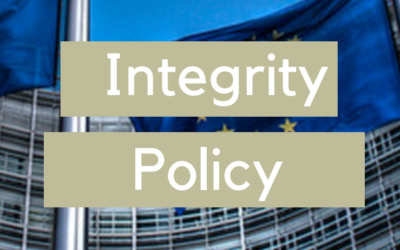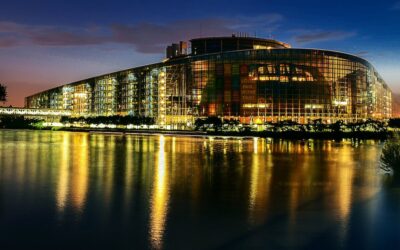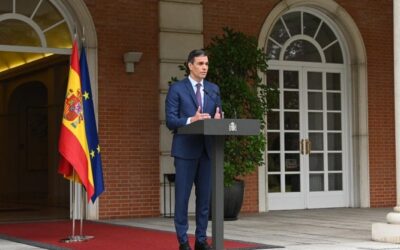The rivalry between Saudi Arabia and Iran has helped shape the Middle East as we have known it in recent years. To limit ourselves to the period after the so-called Arab Springs of 2011, Riyadh and Tehran, besides being the ‘champions’ of two politically, religiously, culturally and economically different worlds, found themselves on opposite sides in Iraq, Syria, Lebanon and Yemen. One an ally of the United States, the other a great enemy of Washington. One that quietly (but not too quietly) winks at Israel, the other that makes opposition to the Jewish state one of its cardinal principles. This is enough to grasp the importance of the (forthcoming) re-establishment of diplomatic relations between Iran and Saudi Arabia. Yet that is not all, because what makes this event historic (yes, we can use this adjective) is the mediation of China, which for the first time played a strongly political role in the Middle East. Given the significance of the event, and the shower of comments it has generated, this week’s topical focus is entirely on the thaw between the two Middle Eastern powers.
The reactions.
Officially (but there is no shortage of those who believe that behind the scenes Washington’s irritation is sky-high), the White House reacted positively to the news: “We support any effort to reduce tension in the region,” especially if this can lead to an end to the war in Yemen, said John Kirby, spokesman for the US National Security Council. Of the same tenor were the reactions of the European Union, through the words of Peter Stano, and various regional actors. Israel was certainly more concerned, with Netanyahu having to acknowledge that although other countries in the region perceive Iran as a threat, they do not share the isolation strategy implemented by Tel Aviv. However, an Israeli official stated that this development does not invalidate the path taken by the Jewish state to normalise relations with Riyadh. On the other side of the border between Israel and Lebanon, Hezbollah leader Hassan Nasrallah called the agreement between Iran and Saudi Arabia a ‘positive transformation’ whose ‘impact will be felt in Lebanon, Yemen, Syria and the region’. However, John Kirby (and he is in good company) also questioned the effectiveness of the roadmap announced by Iran, China and Saudi Arabia: ‘it remains to be seen whether the Iranians will honour their part in the agreement’.
A few days after the announcement of détente between the two countries, a first piece of good news has arrived: according to the Wall Street Journal, the Iranians have decided to stop sending weapons to the Houthi rebels clandestinely. However, even in this case, caution is a must: as numerous insiders have reported over the years of the conflict in Yemen, the degree of control that the Islamic Republic exercises over the Houthis is not comparable to that which Tehran boasts over Hezbollah in Lebanon or the Shiite militias in Iraq. This was confirmed a few days ago by the Houthis themselves. Abdulwahab al-Mahbashi, a member of the political branch of the Yemenite Zaidi movement, said during an interview on Lebanese al-Mayadeen TV: “Saudi Arabia must know that our relationship with Iran is not one of subordination. It is a relationship of Islamic brotherhood. The Yemen issue can only be solved through negotiations between Sanaa and Riyad’. Of course, negotiations would be more credible if Iran stopped blowing smoke.
What does this agreement envisage?
In addition to the commitment to reopen their respective embassies in the next two months, Saudi Arabia and Iran said they would respect each other’s sovereignty and not interfere in each other’s internal affairs. According to the Wall Street Journal’s reconstruction, the understanding also stipulates that Iran will cease attacks on Saudi Arabia conducted from Yemeni territory and that the foreign ministers of the two countries will organise a summit in the coming weeks to work out further details. Also included is the reinstatement of previous agreements on cooperation and trade. It is also stipulated that the satellite broadcaster Iran International, owned by an Anglo-Saudi citizen and designated a terrorist entity by Iran due to its coverage of the demonstrations against the regime that began last September, will tone down its anti-Islamic Republic character. Finally, and perhaps most significantly, China pledges to organise a summit between the Gulf Cooperation Council and Iran by the end of the year.
Many Western media have insisted on two aspects: the first is the caution towards an agreement whose actual possibilities and modalities of implementation are unknown (the Guardian talks about it, for example), while the second concerns China and the growing difficulties Beijing will face now that its role in the region is no longer only economic (but has it ever really been?). Nevertheless, the agreement is certainly an indicator of China’s growing influence in the Middle East, highlighted by the absence of the United States in the negotiations, as Trita Parsi and Khalid Aljabri wrote in Foreign Affairs. To what is this new Chinese prominence due? In part to the radical transformations that have taken place in recent years. One example is the fact that China has increased its specific weight vis-à-vis both Tehran and Riyadh, being the first destination of oil exported by both countries. In addition, the United States (which, by the way, is now particularly focused on Ukraine) could hardly mediate between two countries that are respectively its historical ally and the enemy it has been trying to contain since 1979: the worst possible position for Washington, ‘not entirely reliable for one of its partners, but far too close to one of the parties to maintain any pretense of impartiality, leaving a vacuum that China has begun to fill’. Moreover, Chinese activism is a direct result of some ‘strategic’ mistakes made by the US. Parsi and Aljabri point this out when they speak of a ‘counterproductive policy that combined pressure on Iran with pleading with Saudi Arabia’ for increased oil production. On the same wavelength is Stephen M. Walt’s comment in Foreign Policy that the agreement ‘is a wake-up call for the Biden Administration and the US foreign policy establishment because it highlights the self-imposed handicaps that have long paralysed US policy in the Middle East’.
However, this is not all: Donald Trump’s failure to respond to Saudi Arabia’s attacks in Abqaiq in 2019 made it clear to Mohammed bin Salman that the kingdom no longer had Washington’s unconditional securitarian umbrella. As long as the monarchy could rely on US military protection, diplomacy could remain a secondary option. When it was realised that the securitarian guarantee was not unconditional, the diplomatic approach towards Iran suddenly became a much more attractive option: a classic case of moral hazard, Murtaza Hussein wrote in The Intercept. Washington should therefore learn a lesson from this agreement: if the US continues to ’embroil itself in the conflicts of its regional partners, making itself part of the problem rather than part of the solution, the space for its diplomatic manoeuvres will become increasingly limited, leaving the role of peacemaker to China’. On the other hand, it has often been the Americans’ regional allies who have asked Washington to meddle in their conflicts and security management.
What are the expected benefits for the actors involved in this agreement?
Many media outlets, such as the Wall Street Journal, have written that Iran intends to end the diplomatic isolation to which it was, despite itself, subjected. However, perhaps it is more a question of increasing the diplomatic options available to Tehran: after all, if we consider Iran’s relations with many Middle Eastern countries, as well as with China, Russia and other Asian countries, can we really speak of isolation? What can certainly be said instead is that in the agreement with Saudi Arabia, Tehran makes a significant leap forward in the quality of its relations with the other Persian Gulf countries, especially with the region’s economic heavyweight. This is all the more true if the understanding leads to a further rapprochement with the United Arab Emirates (which had already reopened their embassy in Tehran last year). The announcement of the trip to Abu Dhabi by Ali Shamkhani, secretary of Iran’s Supreme National Security Council, might suggest just that. In the same direction of a new economic cooperation are the statements of Saudi Finance Minister Mohammed Al-Jadaan, who suggested that the Saudis could quickly start investing their capital in Iran. ‘We have no reason,’ Al-Jadaan said, ‘not to invest in Iran, and we have no reason not to allow them to invest in Saudi Arabia. It is in our interest to make sure that both nations benefit from the other party’s resources and competitive advantages’. This is certainly a discourse yet to come, but this is where another possible reason for friction between Riyad and Washington comes in: how to invest and do business with Iran with American sanctions still in place?
The Saudi English-language daily Arab News applauds the diplomatic initiative (of course), but also points out the risks inherent in this new situation. Faisal J. Abbas does so when he warns that the members of the Revolutionary Guardians may not have the same intentions as the Iranian foreign policy officials with whom the agreement was signed. In contrast, Saudi commentator Ali Shihabi effectively expressed both the political opportunities for Riyad and why Beijing’s active presence was crucial. Generally, agreements with Iran ‘are not worth the paper they are written on. But because this is a deal with China, it is as much a commitment to China as it is to Saudi Arabia’. Therefore, Shihabi argues, it is a ‘win-win situation for us: either we can get them [the Iranians] to behave or they will lose face’ with the Chinese. Which, certainly, Iran does not intend to do. Moreover, even from an economic point of view Riyad is not lacking in incentives to at least achieve a ‘cold peace’ with its Persian neighbour (according to some, the Financial Times for example, nothing more can be expected). One of the most significant aspects in this regard is the need to end the war in Yemen, which, as Alex Vatanka (Middle East Institute) put it, contributes to driving investors away from Saudi Arabia at a time when Crown Prince MbS wants to open up the kingdom and diversify its economy as part of Saudi Vision 2030 projects. The China-brokered deal also testifies that Saudi Arabia ‘has chosen to focus on its customers’, to protect itself as best it can from regional adversaries, and to abandon dangerous war initiatives abroad, wrote Karen Young.
From the Chinese point of view, however, the primary goal is stability in the region.
This was specified by Jonathan Fulton (non-resident senior fellow at the Atlantic Council), who stated that ‘the tension between the two countries threatens Chinese interests’, while Karim Sadjadpour (Carnegie Endowment) pointed out that ‘simply put, China wants stability in the Middle East to ensure the free flow of energy from the region. De-escalation between the two regional powers and major energy producers is crucial to these goals’. Also in view of the disproportionate role the US has played in the post-1945 world, the agreement allows China to show itself as a peacekeeping force, which increases the likelihood that Washington’s close allies will also increasingly look towards Beijing.
Analysis by Claudio Fontana – taken from Fondazione Internazionale Oasis



